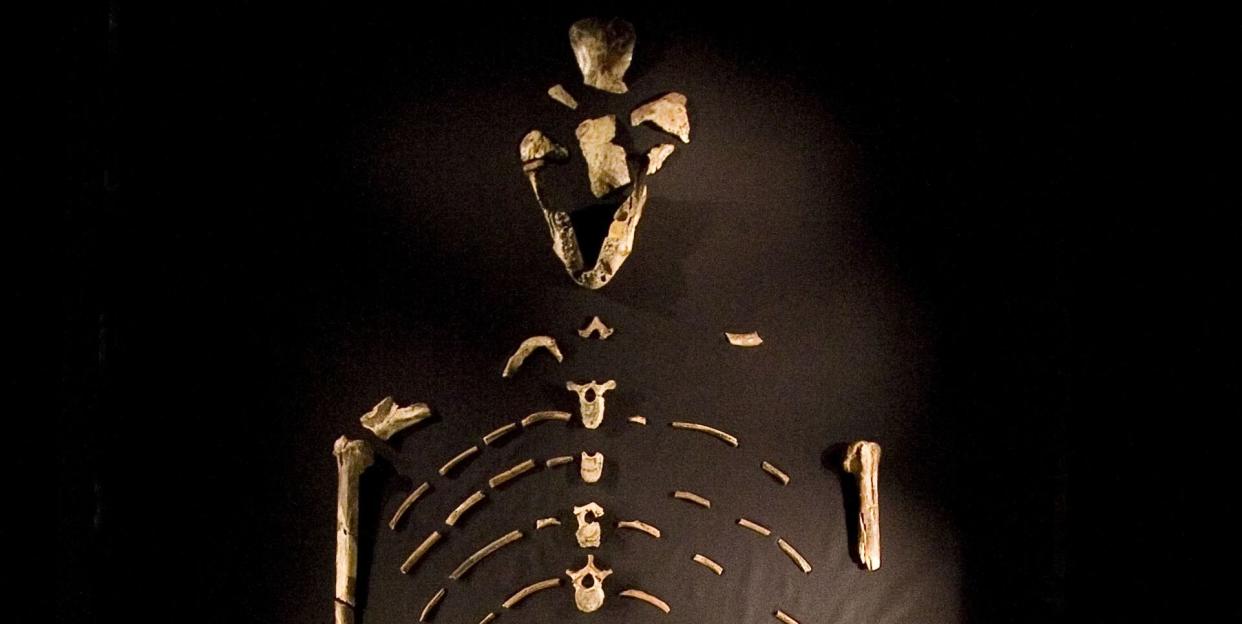Early Human Skulls May Show a Big Step in Our Brain's Evolution

A new paper suggests that early humans had ape-like brains which may have undergone and exhibited human-like growth and plasticity.
It seems that Australopithecus afarensis, a species of early human, may have had a lunate sulcus—a brain region—which shifted its positioning to become less pronounced in modern humans.
Because it's difficult to recreate a lunate sulcus in brain models, it remains unclear where it would have been located in an australopith brain.
It turns out that Australopithecus afarensis, a type of early human, may have been keeping secrets about their species for more than three million years. Among the most famous A. afarensis specimens is Lucy, seen above, whose incomplete remains were discovered in 1974 and make up 40 percent of her entire body.
A. afarensis were hominins native to eastern Africa whose remains indicate bipedalism and small skulls. A recent paper published in Science Advances studied the skulls of two infants and six adults belonging to the species and found that although the brains of A. afarensis looked and were organized like ape brains, they seemingly exhibit some modern human characteristics in how they developed. This discovery sheds light on the evolutionary curiosity surrounding early human and non-human ape brain development.

The researchers used traditional CT scans, light from a particle accelerator, and MRIs to recreate what the surface of the brain would have looked like inside the skull. According to the findings in the paper, Lucy’s brain looked like an ape’s brain but seemingly exhibited a structure called a lunate sulcus. In modern humans, the lunate sulcus isn’t always present and even when it is, it does not correspond to a higher function.
The paper emphasizes that even though it may seem like the A. afarensis specimens they scanned may have had a pronounced lunate sulcus, the structure “typically does not reproduce well on endocranial imprints, so there is uncertainty about its position in australopiths.”
The paper notes that in apes, the lunate sulcus straddles the anterior boundary of the “primary visual cortex of the occipital lobes.” There’s a theory that reorganization within the brain’s structure caused the lunate sulcus to move back, resulting “in a more … human-like placement” which led to the eventual “disappearance of a clear endocranial impression in humans.”
Philipp Gunz, a biological anthropologist and one of the paper authors, told Gizmodo that “even though the brain looks much like an ape brain, it has a human-like feature—that it grows for a long period of time,” allowing for further development and indicating signs of plasticity. Could this evolutionary change be a clear indicator that brains of ancient australopiths were already moving towards being structurally organized the way our brains are today?
The new paper says that in theory, “such brain reorganization could have been linked to behaviors that were more complex than those of their great ape relatives (e.g., tool manufacture, mentalizing, and vocal communication)” but the debate remains “whether protracted brain growth and reorganization are merely by-products of the brain size increase in the genusHomo beginning by two million years ago or evolved in the genus Australopithecus roughly one million years before the marked expansion of the brain.”
You Might Also Like


